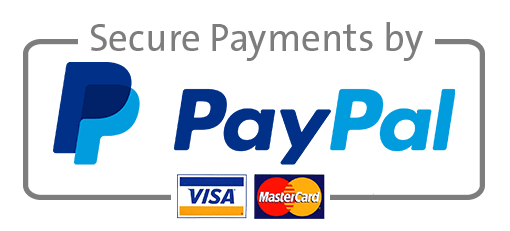Module Rationale
The purpose behind the Applied Marketing Project is to enable students to apply knowledge and skills acquired throughout the course to an organisational issue or problem. This module serves as an integrating mechanism for all other modules as well as developing powers of analysis and evaluation and project management skills. This module follows on from the Marketing Analytics module that students undertook in order to develop the appropriate skills to complete an applied marketing project efficiently and effectively. Overall Aim of the Module The overall aim of this module is to enable students to critically evaluate a specified real-life Marketing problem in order to develop a range of potential solutions. Specifically, the aims of the module are: • To introduce students to marketing consultancy as a key area of applied business activity and to enable them to acquire knowledge and understanding of some of the core areas of marketing consultancy; • To develop research and project management skills to enable students to conduct a marketing consultancy project on a real-life business problem area; • To ensure that students have the necessary competencies to prepare a well-structured and well-presented marketing consultancy project report; • To enhance and further develop knowledge, intellectual, professional and transferable skills that will help prepare students for a career in marketing consultancy.
Successful students will be able to: 1. Demonstrate knowledge and experience of the role of a marketing consultant and when it is beneficial to use marketing consultancy within an organisation 2. Critically evaluate arguments, assumptions, evidence and techniques to support conclusions / recommendations, while ensuring its reliability, validity, significance and investigating contradictory information to successfully complete an applied project 3. Demonstrate skills in management competencies such as project management, to successfully complete an applied project creatively within agreed guidelines 4. Successfully develop the ability to select and manage information, completely undertake reasonably straight-forward research tasks and manage own learning using a full range of related discipline resources.
Assessment Guidelines1.
1. A Consultancy/Project Proposal of 2,000 words setting out consultancy project scope, key deliverables, timescales and project management reporting methods. A project area and client/case study will be identified during week 1 of semester. It is up to you to secure a company to work with or a case company that you can solve a marketing issue for.
Assessment Guidelines 2.
1. The assignment should the form of a consultancy report of 8,500 words providing solutions for a real-life Marketing problem, including recommendations. Report must set the context of the business environment and demonstrate a wide use of the management tools learnt throughout the course. These will be used to conduct the analysis within the company and develop the appropriate strategy that forms the solution. 2. During semester youwillbe allocated a case study project, you will be expected to solve a marketing problem for this company and produce the output as a consultancy report. This should include appendices of research and development you have conducted during semester. 3. You should include a 500-word reflection on your learning in this module at the end of the report. It should be structured using either Gibb’s or Kolbs reflective models. 4. Detailed guidance will be given in the live session in week 1 to provide samples and guidance on how to complete this task successfully
Standard Assessment Guidance
The following guidance is applicable to all coursework items. 1. Marks are awarded for content, quality of discussion and effective use of referencing. To achieve high marks, students will be expected to demonstrate a familiarity with the wider literature in the subject area, and not merely an ability to re-produce the lecture notes. Higher marks will also be awarded to students who provide strong evidence of analysis and critical evaluation of the various concepts and techniques identified and their application to real world situations. 2. Work should include references to journal articles and other relevant publications, and should be properly laid out using the Harvard system of referencing as indicated below: Buzzell R., (1968) ‘Can you standardise multinational marketing’, Harvard Business Review, (Nov-Dec) 46, pp102-113. Jeannet J.P. and Hennessey H.D., (2004) Global Marketing Strategies. 6th ed. Houghton Mifflin. More detailed guidance is available in the ‘Guide to Referencing in the Harvard Style’. We encourage you to avail of the Academic Support via the Library’s Support Service, further details in the Library Support Services Section. 3. Marks will be deducted for incomplete or inaccurate referencing. 4. Students may make multiple submissions in advance of the due date to receive feedback via Turnitin on their academic writing style (similarity score) and any potential plagiarism issues. A similarity score of less than 20% is acceptable. 5. Students must adhere to the word limit policy so as to avoid penalties as follows: +10% – no penalty +>10% – 20% – 5% penalty +>20% – 30% – 10% penalty +>30% – 40% – 15% penalty +>40% – 50% – 20% penalty +>50% – maximum mark of 40
Books Required (Must read)
Wickham and Wilcock, 2020, Business and Management Consulting: Delivering an Effective Project, 6th Edition, Pearson Books Recommended (Should read/ Could read) Wickham and Wilcock, 2016. Management Consulting: Delivering an Effective Project, 5th edn, Pearson O’Mahoney, J., (2013), Management Consultancy, 2nd ed., Oxford: Oxford University Press. Gardiner, P., (2012), Project Management (2e), Basingstoke: Palgrave Macmillan. Stokes, D. and Wilson, N., 2010. Small Business Management and Entrepreneurship, 6th edn, Andover: Cengage Learning EMEA. Turner, R., Huemann, M., Anbari, F. and Bredillet, C., 2010. Perspectives on Projects, ist edn, London: Routledge. Greiner, L.E., Olson, T.H. and Poulfelt, F. (Eds.) 2009. Management Consultancy Today and Tomorrow Casebook, 1st edn, London: Routledge. Useful Journals Journal of Digital & Social Media Marketing Strategic Digital Marketing Journal of Interactive Marketing Journal of Marketing UsefulWebsites Forbes.com Gartner.com McKinsey.com

